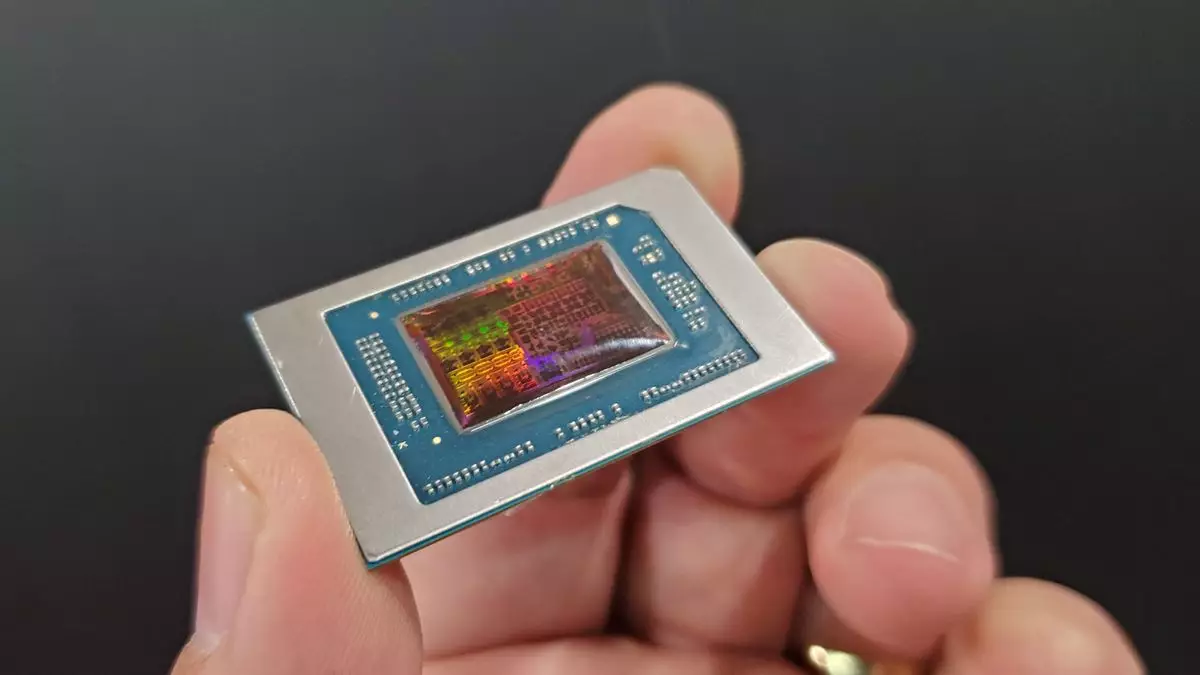AMD’s Strix Point APU is rapidly gaining attention for its exceptional capability in portable computing devices, including high-performance laptops like the Razer Blade 16 and innovative handheld consoles such as the OneXPlayer OneXFly F1 Pro. As technology progresses, the demand for powerful yet compact processors is rising, and AMD is stepping up magnificently with its new architecture. The imminent desktop version, expected to hit the market in the fourth quarter of 2025, signals a significant leap in processing power tailored for compact systems, or “mini PCs,” that strive for both performance and space efficiency.
Reports suggest that the desktop counterpart, poised to be labeled the “Ryzen 9000G,” may incorporate AI enhancements, perhaps becoming the Ryzen AI 9000G. Regardless of the branding, the Strix Point silicon has already proven its prowess in portable environments, providing a diversified architecture that balances power and efficiency. Those familiar with AMD’s Zen architecture will be thrilled to learn the desktop APU can integrate up to 12 CPU cores, combining the robust full Zen 5 cores with compact Zen 5c cores for specialized tasks.
Power-Packed Graphics and Next-Level AI Functionality
On the graphics front, the Strix Point APU distinguishes itself by including 16 RDNA 3.5 graphics compute units. This enhances graphical fidelity and processing speed, making it a truly versatile chip for gaming and creative applications alike. Moreover, the inclusion of a neural processing unit (NPU) rated at an impressive 55 TOPS (trillions of operations per second) signals that AMD is not just riding the AI wave but is ready to incorporate it deeply into consumer technology.
Such capabilities, particularly in an impressive compact design, are phenomenal. A big question lingering in the minds of tech enthusiasts is whether Strix Point for desktops will achieve higher clock speeds than its mobile variants. Given the thermal and power considerations inherent in desktop environments, this is a reasonable assumption, suggesting that desktop users could experience an uptick in performance once the APU is fully optimized.
Compatibility with the AM5 Ecosystem
Another advantage is that the Strix Point APU is expected to utilize the existing AM5 socket, offering a seamless fit for those invested in the AMD ecosystem. This means users of previous- and current-generation AMD systems won’t have to change motherboards, making upgrades more accessible and cost-effective. Taking into account the existing Ryzen 8000G series, which includes chips like the Ryzen 7 8700G and Ryzen 5 8600G, the Strix Point APU could serve as a compelling upgrade for anyone looking to enhance their compact computing setup.
This integration of advanced technology with existing infrastructure demonstrates AMD’s commitment to its user base. Just as the Ryzen 8000 series laid the groundwork for superior performance with its Zen 4 CPU architecture and RDNA graphic units, Strix Point aims to elevate the mini PC experience to unprecedented levels.
The Mini PC Revolution: A Practical Approach to Modern Computing
The Strix Point APU seems particularly well-suited to affordably power mini PCs like the Ayaneo Retro Mini PC AM01S, melding advanced technology with affordability. Given that mobile chips often command premium prices, the desktop version could present a budget-friendly alternative for creators and gamers seeking competent performance in a petite chassis. While one might argue that a dedicated CPU-plus-GPU setup would outperform this all-in-one solution in pure gaming scenarios, the portability and energy efficiency of a mini PC equipped with Strix Point is set to resonate well with a diverse range of users.
As we anticipate the official launch, this evolving narrative surrounding AMD’s Strix Point not only illustrates remarkable technological advancements but also invites a deeper conversation about the future of compact computing. By reimagining how we view performance, AMD is poised to lead in an industry increasingly defined by efficiency without sacrificing power. Thus, the excitement surrounding Strix Point is not merely about an exciting new chip; it encapsulates a broader shift toward more adaptable, efficient computing solutions that empower users across various fields and lifestyles.

